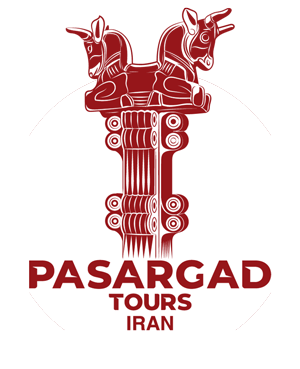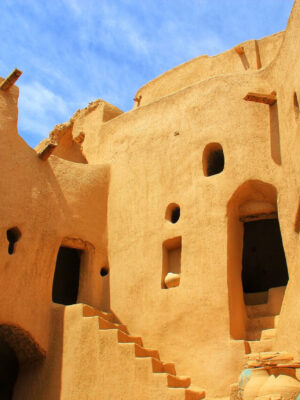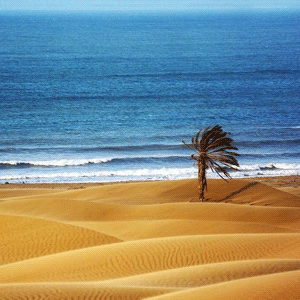When Jean Chardin traveled to Iran in the late 17th century, the Persians called Qazvin as Dar-al-saltaneh (sultanate) among the people since it was the capital of the Safavid dynasty (1501-1736) before Isfahan. Chardin states that Qazvin was once named Europe, the name of a Greek goddess. This name later changed to Arsaces with the rise of the Parthians (247 BC-224 AD). He also indicates that, based on the writings of the Greek historian Strabo, the name “Qazvin”, comes from the Kassites. These people lived in the Caspian area and ruled Mesopotamia for a long period.
The architecture of old town Qazvin is a combination of Safavid (1501-1736) and Qajar (1796-1925) period styles; its famous gates like the Kooshk Gate and Tehran Gate have fabulous tileworks. To appreciate the Safavid era Qazvin, one can refer to Adam Olearius’, the German traveler and translator of the famed Iranian poet Sa’adi’s works. He recounts his visit as the following:
“After some cannons shots for respect, fifteen young girls on horseback came toward us from Qazvin. They were wearing priceless jewelry and colorful silk dresses with no veil (which was against their traditions) as a gesture of respect. They greeted us with warm smiles and held a glorious welcome ceremony with music, magic tricks, and games in the central square of the city. Qazvin has two main squares, named A’at Meidani (Horse square) and Zangeh Meidan, with grand bazaars around them”.
Qazvin Monuments
There was a famous street which extended from Zangeh square to the Royal Citadel. Nearby is the Chehel Sotun Palace, a palace with forty pillars, which displays the similarities among the three Safavid era capitals of Tabriz, Qazvin, and Isfahan. Today the A’li Qapu Gate mirrors the grandeur of Qazvin in those days. Further along the same route is the Grand Hotel, the first modern hotel in Iran built in the late Qajar period, integrating Persian and European style architecture. There are also many pre-Safavid era attractions in Qazvin, including its Jame Mosque, a relic of the Seljuk period (1037-1194). Last but not least, the city is famous for its ancient cisterns, which include some of the largest in Iran.
Qazvin
When Jean Chardin traveled to Iran in the late 17th century, the Persians called Qazvin as Dar-al-saltaneh (sultanate) among the people since it was the capital of the Safavid dynasty (1501-1736) before Isfahan. Chardin states that Qazvin was once named Europe, the name of a Greek goddess. This name later changed to Arsaces with the rise of the Parthians (247 BC-224 AD). He also indicates that, based on the writings of the Greek historian Strabo, the name “Qazvin”, comes from the Kassites. These people lived in the Caspian area and ruled Mesopotamia for a long period.
The architecture of old town Qazvin is a combination of Safavid (1501-1736) and Qajar (1796-1925) period styles; its famous gates like the Kooshk Gate and Tehran Gate have fabulous tileworks. To appreciate the Safavid era Qazvin, one can refer to Adam Olearius’, the German traveler and translator of the famed Iranian poet Sa’adi’s works. He recounts his visit as the following:
“After some cannons shots for respect, fifteen young girls on horseback came toward us from Qazvin. They were wearing priceless jewelry and colorful silk dresses with no veil (which was against their traditions) as a gesture of respect. They greeted us with warm smiles and held a glorious welcome ceremony with music, magic tricks, and games in the central square of the city. Qazvin has two main squares, named A’at Meidani (Horse square) and Zangeh Meidan, with grand bazaars around them”.
Qazvin Monuments
There was a famous street which extended from Zangeh square to the Royal Citadel. Nearby is the Chehel Sotun Palace, a palace with forty pillars, which displays the similarities among the three Safavid era capitals of Tabriz, Qazvin, and Isfahan. Today the A’li Qapu Gate mirrors the grandeur of Qazvin in those days. Further along the same route is the Grand Hotel, the first modern hotel in Iran built in the late Qajar period, integrating Persian and European style architecture. There are also many pre-Safavid era attractions in Qazvin, including its Jame Mosque, a relic of the Seljuk period (1037-1194). Last but not least, the city is famous for its ancient cisterns, which include some of the largest in Iran.
Qazvin
When Jean Chardin traveled to Iran in the late 17th century, the Persians called Qazvin as Dar-al-saltaneh (sultanate) among the people since it was the capital of the Safavid dynasty (1501-1736) before Isfahan. Chardin states that Qazvin was once named Europe, the name of a Greek goddess. This name later changed to Arsaces with the rise of the Parthians (247 BC-224 AD). He also indicates that, based on the writings of the Greek historian Strabo, the name “Qazvin”, comes from the Kassites. These people lived in the Caspian area and ruled Mesopotamia for a long period.
The architecture of old town Qazvin is a combination of Safavid (1501-1736) and Qajar (1796-1925) period styles; its famous gates like the Kooshk Gate and Tehran Gate have fabulous tileworks. To appreciate the Safavid era Qazvin, one can refer to Adam Olearius’, the German traveler and translator of the famed Iranian poet Sa’adi’s works. He recounts his visit as the following:
“After some cannons shots for respect, fifteen young girls on horseback came toward us from Qazvin. They were wearing priceless jewelry and colorful silk dresses with no veil (which was against their traditions) as a gesture of respect. They greeted us with warm smiles and held a glorious welcome ceremony with music, magic tricks, and games in the central square of the city. Qazvin has two main squares, named A’at Meidani (Horse square) and Zangeh Meidan, with grand bazaars around them”.
Qazvin Monuments
There was a famous street which extended from Zangeh square to the Royal Citadel. Nearby is the Chehel Sotun Palace, a palace with forty pillars, which displays the similarities among the three Safavid era capitals of Tabriz, Qazvin, and Isfahan. Today the A’li Qapu Gate mirrors the grandeur of Qazvin in those days. Further along the same route is the Grand Hotel, the first modern hotel in Iran built in the late Qajar period, integrating Persian and European style architecture. There are also many pre-Safavid era attractions in Qazvin, including its Jame Mosque, a relic of the Seljuk period (1037-1194). Last but not least, the city is famous for its ancient cisterns, which include some of the largest in Iran.
Related Tours
























